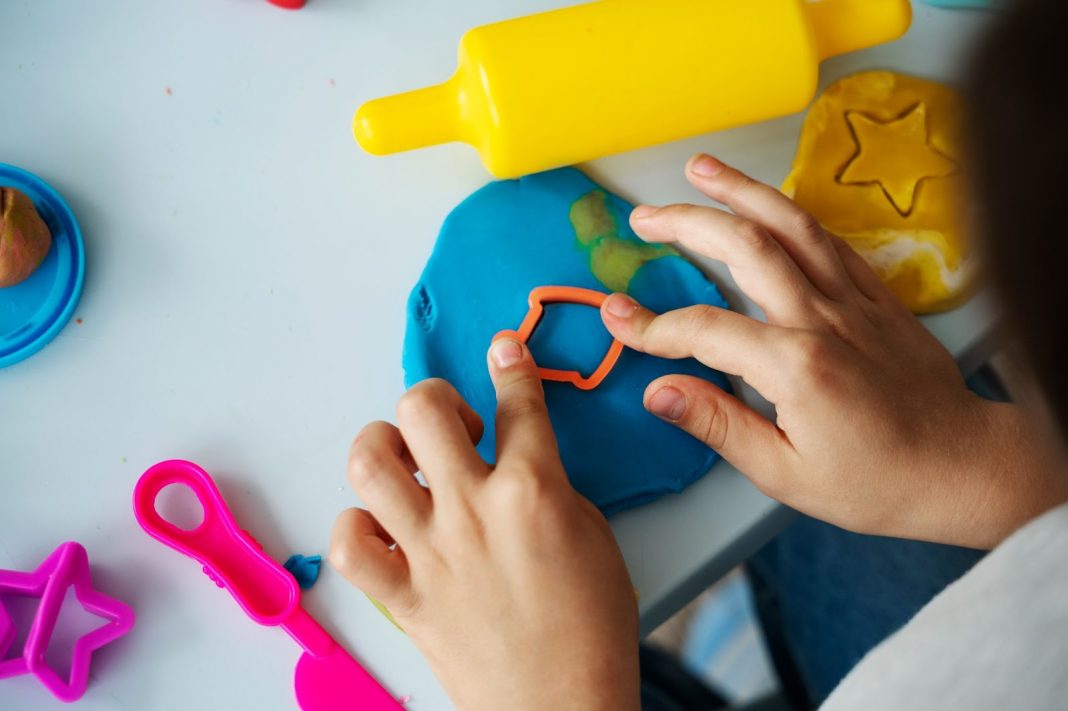In a world surrounded by digital influence, the importance of hands-on learning cannot be overstated. From experimenting in science class to reenacting historical events, hands-on activities immerse students in a vibrant learning environment, allowing them to retain more information and apply their newly acquired skills.
Math & ELA | PreK To Grade 5
Kids see fun.
You see real learning outcomes.
Watch your kids fall in love with math & reading through our scientifically designed curriculum.
Parents, try for free Teachers, use for free
While traditional classroom lectures have their place, studies have shown that kinesthetic learning, where students actively participate in physical activities related to the subject material, is the most successful way of learning. According to a study from The Thinking Kid, “Kinesthetic learning is where a student carries out physical activities rather than listening to a lecture, helping them gain a superior understanding of the material.” This participatory form of education not only engages both the left and right sides of the brain but also fosters teamwork, critical thinking, and a genuine love for knowledge.
With this in mind, we’ve curated a list of the best hands-on activities that promise not just fun but also a rich, educational experience for your kids. Dive in and discover the magic of hands-on learning!
20 Fun Activities to Get Kids Off Screens and Into Hands-On Fun!
Here are our top picks of hands-on activities for kids:
1. Playing Online Educational Games
Dealing with kids and too much screen time is a big worry for many parents. We all know that kids often spend hours staring at screens, and it’s hard to make sure this time is used well. That’s where online educational games can really help. They turn screen time into a chance for kids to learn and have fun at the same time, especially with subjects like math.
SplashLearn stands out as an excellent example of how online games can offer a hands-on learning experience. Here’s a closer look at how SplashLearn makes learning math hands-on, even in a digital format:
- Instead of just watching videos or playing regular games, SplashLearn lets kids play engaging math learning games where they have fun while mastering essential skills. It’s like hiding veggies in a tasty meal – kids enjoy the game but are also learning.
- Kids don’t just sit back and watch; they really get into what they’re doing. They have to think and make choices, like picking the right numbers or solving puzzles. This is a great way to learn!
- For parents worried about what their kids do online, SplashLearn is safe and educational. It’s a good way to use screen time, so you don’t have to feel bad about your kids being on their device.
- Every kid is different, and SplashLearn gets that. Kids can learn at their own speed, so they don’t feel rushed or bored.
2. Puzzle Race
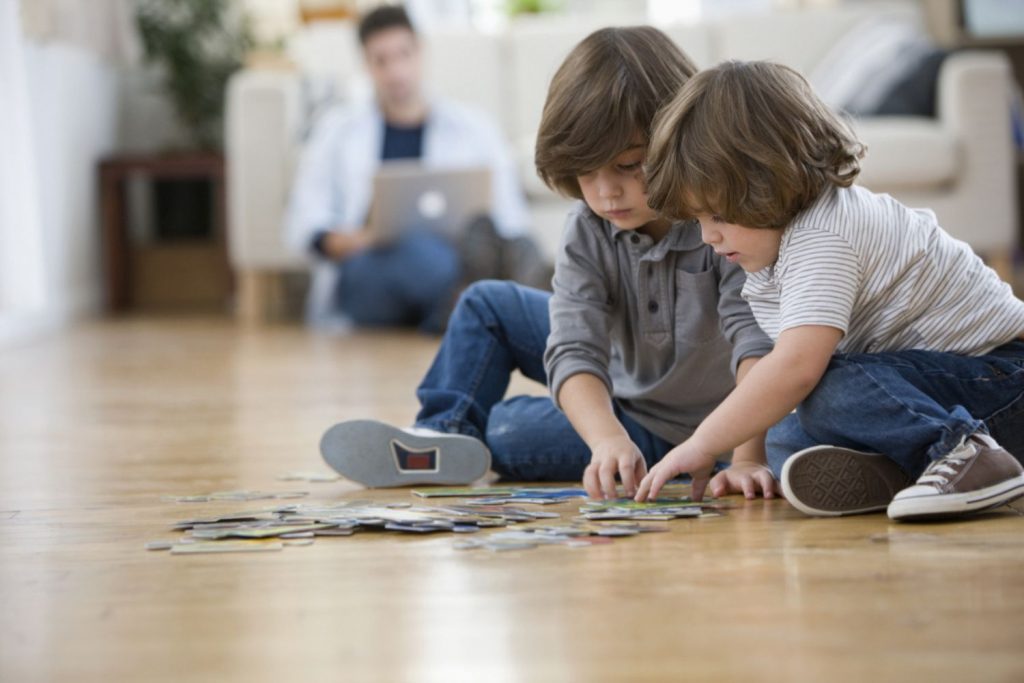
Turn puzzle-solving into one of the competitive hands-on games. This activity not only enhances problem-solving skills but also adds an element of excitement.
Materials Needed:
- Two identical puzzles
- Timer
How to Do It:
- Divide participants into two teams.
- Start the timer and see which team completes their puzzle first.
Related Reading: Best Math Puzzles for Kids to Improve Cognitive Abilities
3. Nature Collage
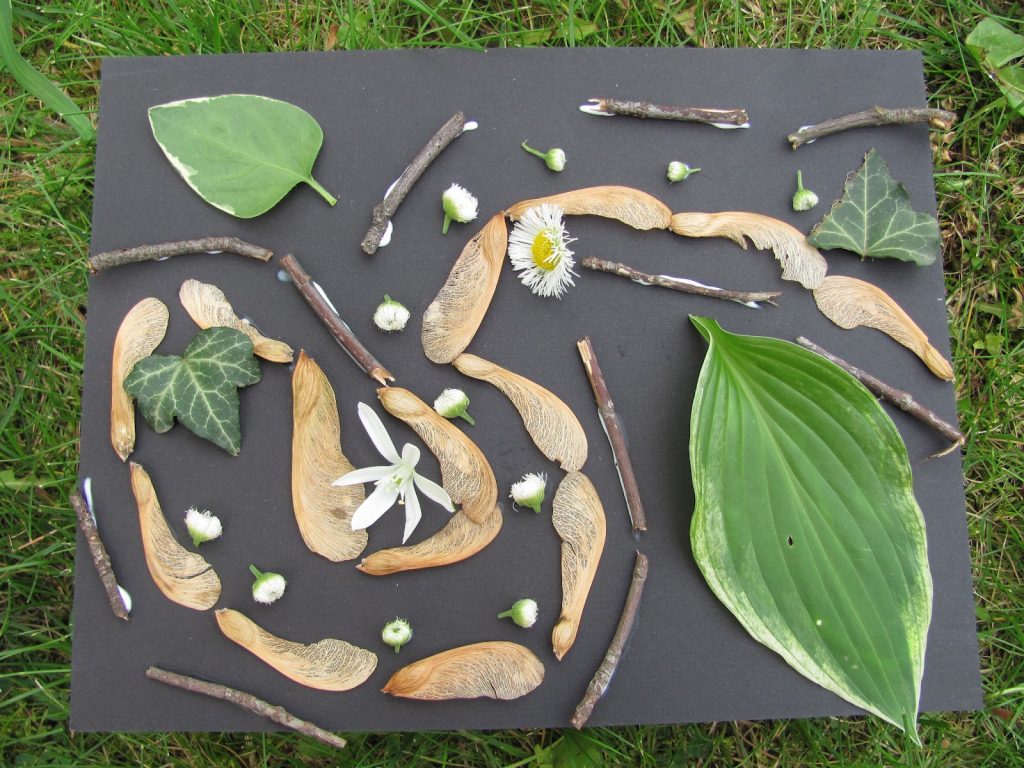
Encourage children to connect with nature through these fun learning activities for kids. A nature collage allows kids to explore their surroundings and use their findings to create beautiful art.
Materials Needed:
- Cardboard or poster board
- Natural items (leaves, twigs, flowers, etc.)
- Glue
How to Do It:
- Go on a nature walk and collect various items.
- Arrange the collected items on the cardboard.
- Glue them in place to create a beautiful nature-inspired collage.
4. Fraction Pizza Party
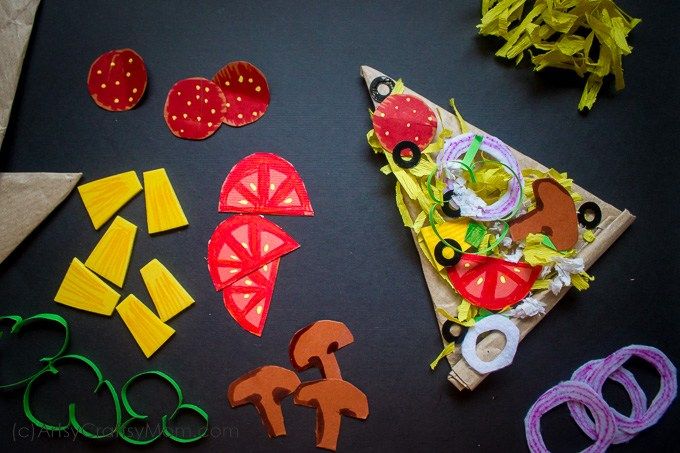
Teach fractions in a delicious way by organizing a pizza party where kids can learn about halves, quarters, and eighths.
Materials Needed:
- Paper plates
- Colored paper or felt (red, yellow, brown) to represent different pizza toppings
- Scissors and glue
How to Do It:
- Cut the paper plates into halves, quarters, and eighths.
- Ask kids to decorate each ‘slice’ with paper toppings.
- Mix and match the slices to create whole pizzas, discussing the fraction each slice represents.
5. Magnetic Fishing Game
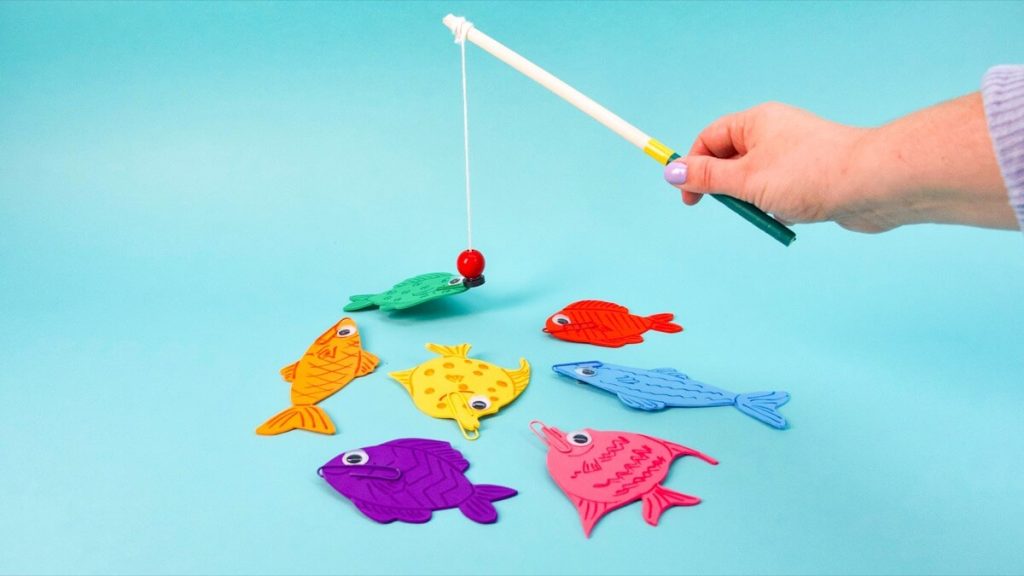
This activity offers a hands-on experience that combines craft with play. Kids can create fish and then “fish” for them using a magnetic fishing rod.
Materials Needed:
- Paper or cardboard
- Markers or crayons
- Paper clips
- String
- Stick or dowel
- Small magnet
How to Do It:
- Draw and cut out fish shapes from paper or cardboard.
- Attach a paper clip to each fish.
- Tie a string to the stick or dowel and attach the magnet to the other end.
- Scatter the fish on the floor and use the magnetic fishing rod to catch them!
6. Bead Counting and Sorting
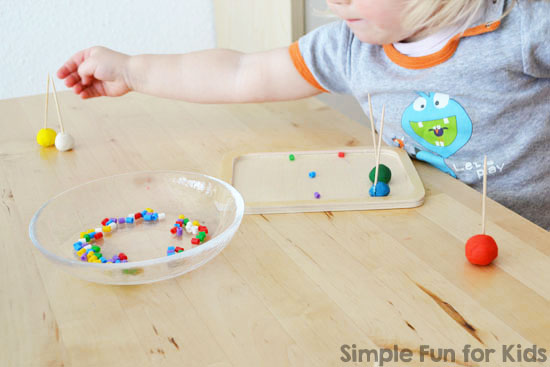
This activity is excellent for teaching counting, sorting by color, and introducing basic addition and subtraction.
Materials Needed:
- A variety of colored beads
- Small cups or containers for sorting
- String (optional, for making bead necklaces or bracelets)
How to Do It:
- Spread out the beads and ask the child to sort them into different containers based on color.
- Once sorted, encourage counting the beads in each container.
- For older children, introduce concepts of addition and subtraction by adding or removing beads from the containers.
- Optionally, use the beads to create necklaces or bracelets, reinforcing counting and pattern-making skills.
Related Reading: Best Number Activities for Preschoolers
7. Homemade Playdough
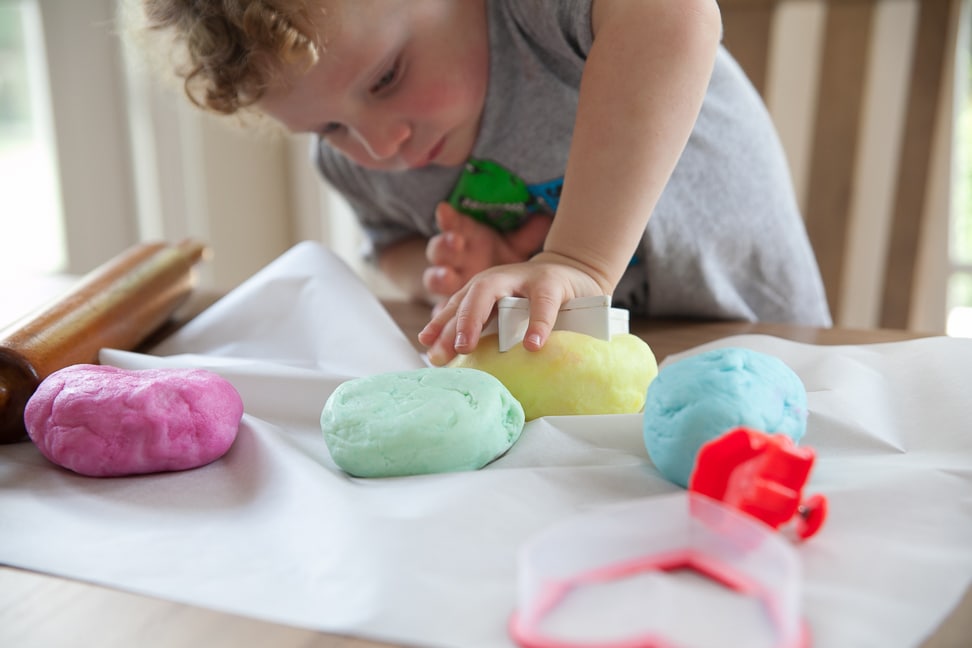
Making playdough at home is one of those classic hands-on projects that kids adore. It’s not only fun to make but also provides hours of creative play.
Materials Needed:
- 2 cups of flour
- 2 cups of warm water
- 1 cup of salt
- 2 tablespoons of vegetable oil
- Food coloring
How to Do It:
- Mix flour, water, salt, and vegetable oil in a bowl.
- Divide the dough into portions and add different food coloring to each.
- Knead until smooth and store in airtight containers.
8. Floating Egg Experiment
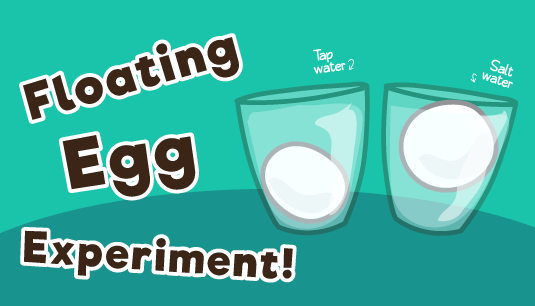
This science experiment offers kids a hands-on experience with density and buoyancy, teaching them why certain objects float in water while others sink.
Materials Needed:
- Raw egg
- Glass of water
- Salt
How to Do It:
- Place the egg in a glass of plain water and observe (it should sink).
- Add salt to the water, stirring until dissolved.
- Place the egg back in the saltwater solution and watch it float!
Related Reading: Best Mindblowing Science Activities for Preschoolers
9. Shape Sorting Fun
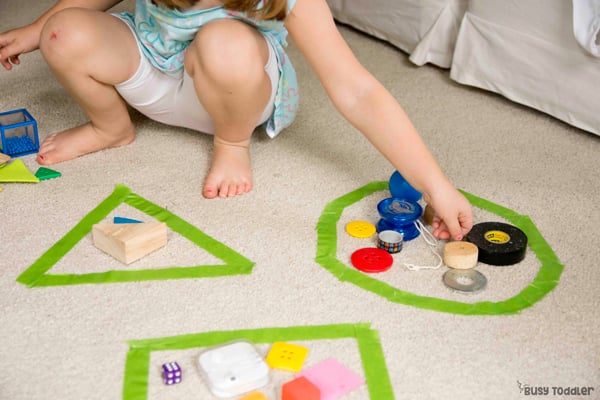
Introduce basic geometry and sorting skills with this simple yet educational activity. It’s perfect for teaching young kids about different shapes and their properties.
Materials Needed:
- A variety of shapes cut from paper or cardboard (circles, squares, triangles, etc.)
- Labeled containers or areas for each shape
How to Do It:
- Spread out the different shapes.
- Ask the children to sort the shapes into the corresponding labeled containers or areas.
- Discuss the properties of each shape (e.g., number of sides, angles).
10. DIY Wind Chimes
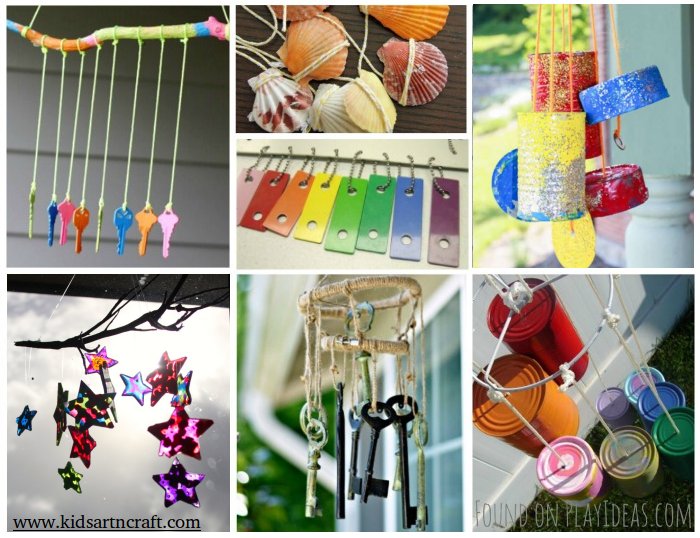
Crafting wind chimes is a delightful way to combine art with science. Kids can explore sounds and vibrations while creating a beautiful piece for the garden.
Materials Needed:
- String or yarn
- Beads, shells, or old keys
- A stick or dowel
- Paints (optional)
How to Do It:
- Paint the stick or dowel if desired and let it dry.
- Tie strings of varying lengths to the stick.
- Attach beads, shells, or keys to the other end of the strings.
- Hang the wind chime outside and enjoy the soothing sounds.
11. DIY Sundial
Time-telling takes a natural turn with these hands-on learning activities. Kids can learn about the sun’s movement and how shadows can indicate the time of day.
Materials Needed:
- A flat surface or cardboard
- A straight stick or dowel
- A watch or clock (for calibration)
- Markers or chalk
How to Do It:
- Place the stick vertically on the flat surface.
- Every hour, mark the end of the shadow with the corresponding time.
- Over the day, you’ll have a sundial that can tell time!
12. Paper Plate Marble Maze
Combining creativity with problem-solving, this activity is a fantastic example of hands-on learning examples. Kids can design their own mazes and then navigate them using a marble, learning about gravity and spatial awareness in the process.
Materials Needed:
- Paper plates
- Straws or craft sticks
- Glue
- A marble
How to Do It:
- Cut the straws or craft sticks to create walls for your maze.
- Glue them onto the paper plate in a maze pattern.
- Once dry, place the marble at the start and tilt the plate to navigate the marble through the maze.
Related Reading: Best STEM Activities to Spark Innovation & Creativity in Kids
13. DIY Kaleidoscope
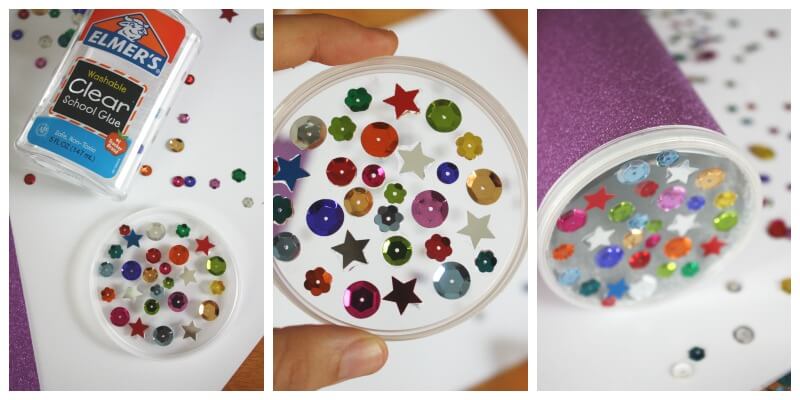
Dive into the world of reflections and patterns with these fun hands-on activities. A homemade kaleidoscope allows kids to explore light and symmetry.
Materials Needed:
- A cardboard tube
- Small translucent beads or sequins
- Aluminum foil
- Plastic wrap or clear plastic
- Rubber bands
How to Do It:
- Cut a piece of aluminum foil slightly shorter than the tube and wide enough to roll into a triangular shape inside the tube.
- Place the beads or sequins inside the triangular foil.
- Cover one end of the tube with plastic wrap and secure with a rubber band.
- Look through the open end and rotate the tube to see changing patterns.
14. Plant Growth Observation
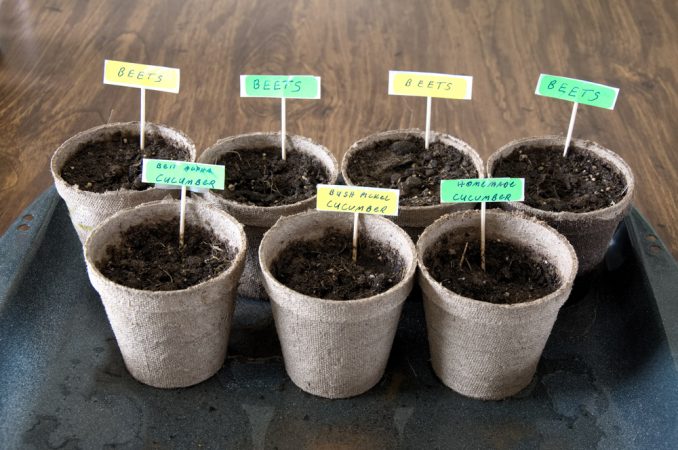
One of the most fun hands-on learning activities is observing plant growth. Kids can learn about botany and the life cycle of plants.
Materials Needed:
- A clear plastic cup
- Soil
- Seeds (e.g., beans or sunflowers)
- Water
How to Do It:
- Fill the cup with soil and plant the seeds.
- Water regularly and place in a sunny spot.
- Observe and document the growth over days and weeks.
Related Reading: Best Mindblowing Science Activities
15. DIY Musical Instruments
Music meets science in these hands-on learning examples. Kids can create simple instruments and learn about sound waves and vibrations.
Materials Needed:
- Empty containers or boxes
- Rubber bands of various sizes
- Rice, beans, or bells
How to Do It:
- For a guitar, stretch rubber bands over an empty box.
- For a shaker, fill a container with rice, beans, or bells.
- Play and experiment with different sounds!
16. Floating and Sinking Objects
Dive into the principles of buoyancy with these fun hands-on activities. Kids can predict and test which objects float or sink in water.
Materials Needed:
- A large container filled with water
- Various objects (cork, plastic toys, coins, etc.)
How to Do It:
- Ask kids to predict which items will float and which will sink.
- Test each object by placing it in the water.
- Discuss the results and the properties that make objects float or sink.
17. DIY Compass
This is one of those fun practical activities that introduces kids to the wonders of magnetism and the Earth’s magnetic field. By creating their own compass, children can witness firsthand how our planet’s magnetic forces operate.
Materials Needed:
- A needle
- A magnet
- A small piece of cork or foam
- A bowl of water
How to Do It:
- Stroke the needle with the magnet several times in one direction.
- Insert the needle into the cork or foam piece.
- Float it in the bowl of water and watch it align itself to point North-South.
18. Shadow Puppet Theater
Kids can dive into the enchanting world of storytelling with this creative activity. Kids can design their own characters and craft tales using the simple magic of shadows, fostering imagination and narrative skills.
Materials Needed:
- Cardboard or thick paper
- Sticks or straws
- Flashlight or lamp
- Blank wall or sheet
How to Do It:
- Cut out shapes or characters from the cardboard.
- Attach them to sticks or straws.
- In a dark room, shine the flashlight on the shapes to cast shadows on the wall or sheet and start the storytelling.
19. Floating Stick Challenge
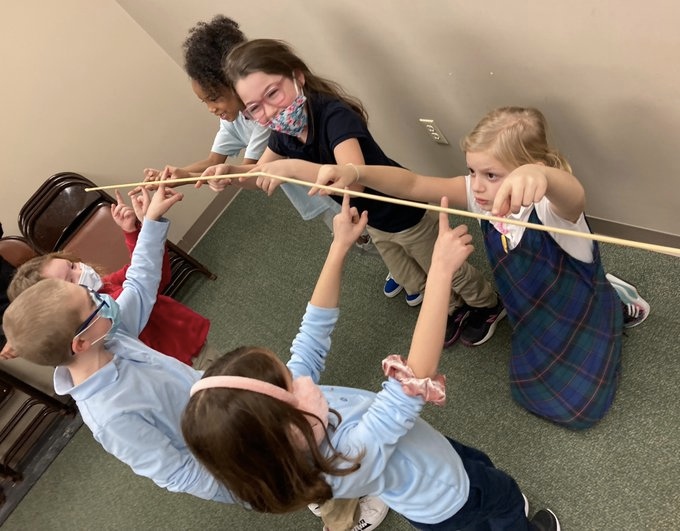
A hands-on activity that delves into the principles of balance and the center of gravity. By experimenting with a stick and weights, kids can gain a deeper understanding of equilibrium and physics.
Materials Needed:
- A long stick or rod
- Objects of varying weights
How to Do It:
- Challenge kids to balance the stick on their fingers.
- Add weights to the stick and see how it affects the balance point.
20. DIY Marble Run
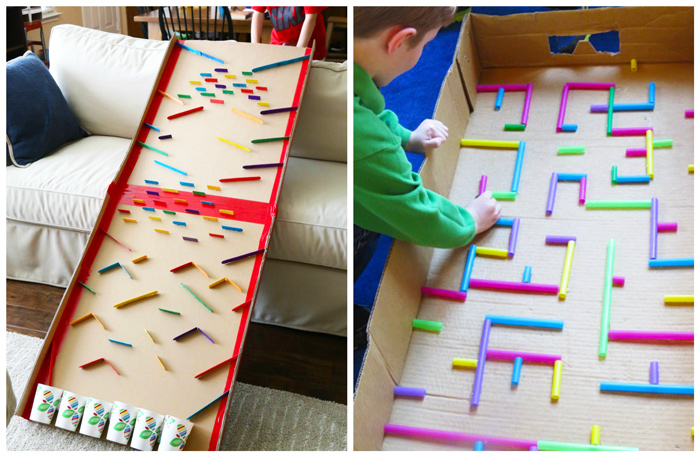
One of the most dynamic hands-on games, creating a marble run allows kids to experiment with gravity, momentum, and engineering.
Materials Needed:
- Cardboard tubes or pieces
- Tape or glue
- Marbles
How to Do It:
- Design and construct a series of ramps and tunnels using the cardboard.
- Place the marble at the top and watch it navigate the run.
6 Benefits of Hands-on Learning Activities for Kids
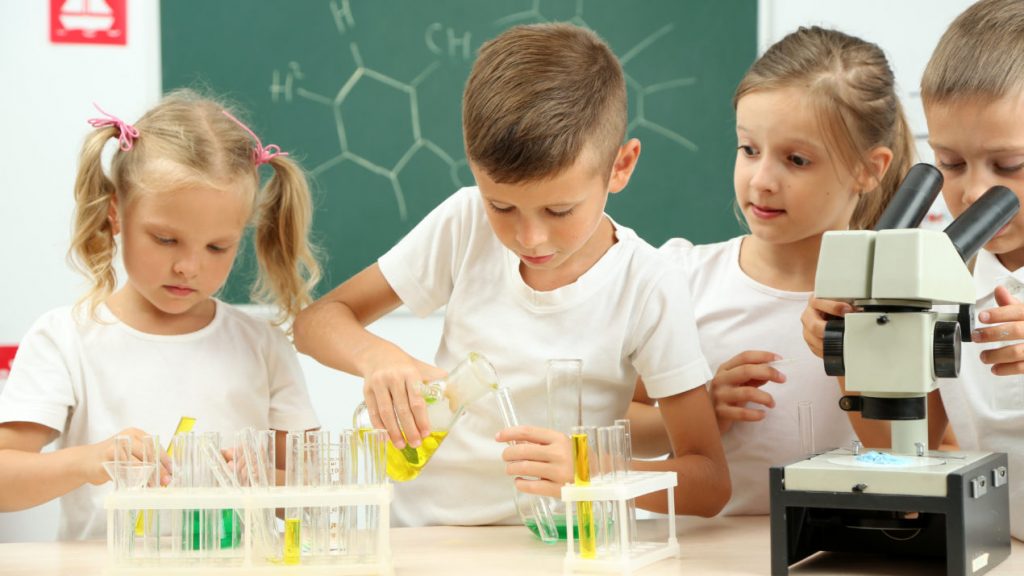
Hands-on learning is not just a buzzword in the educational world; it’s a transformative approach that has been proven to offer numerous benefits to students. This method of learning, which emphasizes active participation and real-world experiences, has been shown to be more effective than traditional textbook-and-lecture formats. But what exactly makes hands-on learning so impactful for kids? Let’s delve into its advantages:
- Improved Retention of Information: According to a piece by Jonathan Arnholz on Build Your Future, students who engage in hands-on activities are more likely to grasp and remember what they’re taught.
For instance, the study highlighted that 8th graders who built a water purification device had much higher test scores than those who merely received lectures about water quality. This improved retention is attributed to the fact that hands-on learning engages both hemispheres of the brain, leading to stronger neural connections and better information storage.
- Improved Attentiveness: We’ve all witnessed the glazed-over eyes of students during a lengthy lecture. Hands-on activities, however, breathe life into learning. They require students to be alert, attentive, and actively involved. As Arnholz points out, it’s much harder to be drowsy when you’re engaged in a meaningful activity. In fact, 81% of high school dropouts have expressed that real-world learning opportunities would have kept them in school.
- Pride in Real Results: Unlike traditional lectures that might result in pages of notes, hands-on learning often leads to tangible outcomes. Whether it’s a carpentry student crafting a wooden chair or a science student observing bacteria under a microscope, the tangible results of their efforts offer a sense of accomplishment and pride.
- Opportunity for Experimentation: Hands-on learning provides students with the chance to experiment and discover their passions. By actively participating in various activities, they can better understand their strengths, weaknesses, and interests, making it easier for them to make informed decisions about their future careers.
- Promotes Critical Thinking and Problem Solving: When students are actively involved in a task, they’re more likely to encounter challenges that require critical thinking and problem-solving skills. This not only enhances their cognitive abilities but also prepares them for real-world scenarios.
- Encourages Teamwork: Many hands-on activities are collaborative, requiring students to work together. This fosters teamwork skills, allowing students to learn how to communicate effectively, delegate tasks, and work harmoniously with others.
Conclusion
Engaging in hands-on activities is a fantastic way for kids to learn, explore, and grow. These activities not only make learning fun but also help children grasp complex concepts more easily. By trying out these activities, parents and educators can provide children with memorable experiences that foster curiosity and a love for learning. So, dive in, get those hands busy, and watch the magic of hands-on learning unfold!
Related Reading: Best Hands-On Growth Mindset Activities for Kids
Frequently Asked Questions (FAQs)
How often should I introduce these activities to my child?
Regular engagement is key. Introducing a new activity once a week can keep learning fresh and exciting, but even once a month can be impactful.
Can these activities be adapted for different age groups?
Absolutely! Most activities can be simplified for younger kids or made more complex for older ones, ensuring age-appropriate challenges and learning.
Are these activities suitable for group settings or classrooms?
Yes! These activities are versatile and can be adapted for individual or group settings, making them perfect for both home and classroom environments.

















